Author: DoganEth; Compiler: Luccy, BlockBeats
Editor's Note: Encryption researcher DoganEth conducts an in-depth analysis of EigenLayer from the perspective of trust and encryption anarchism. He pointed out that innovative technologies such as Bitcoin, Ethereum, and EigenLayer have played a key role in building a decentralized trust system, while also highlighting the challenges and trade-offs involved. DoganEth demonstrates the future possibilities of trust in the encrypted economy by exploring the DA layer and EigenDA. BlockBeats compiled the original text as follows:
"Trust is a fundamental aspect of relationships and society, rooted in trust, truth, and trust in someone or something. Belief in ability or power."
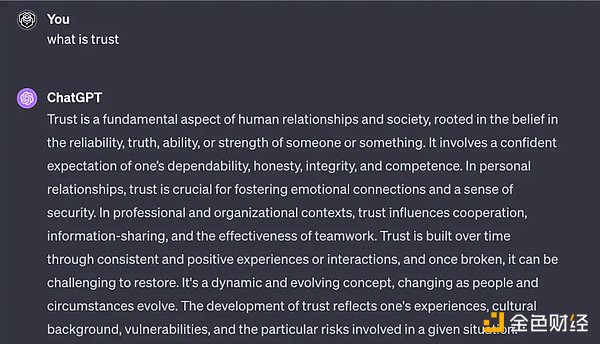
ChatGPT's answer to "What is trust":
Since the beginning of human history, trust has always been the foundation of society and Concepts at the heart of human relationships. Trust is necessary first for survival, then for hunting and gathering activities, and finally for social structure. Today, trust has become the main element of modern society, and it is mainly provided by governments, especially in the economic and legal fields.
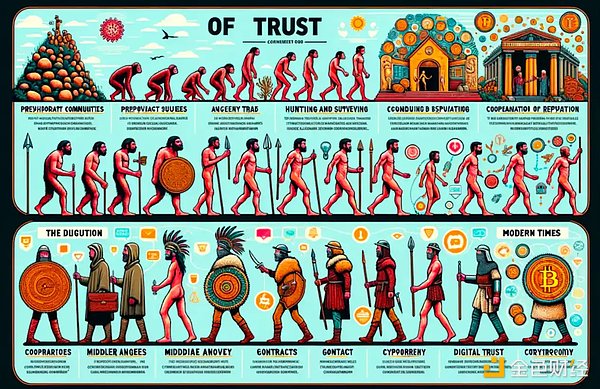
Dall-E — The evolution of trust
From the earliest days of trade , trust has always been the core of business. People initially believed that the barter counterparty was not selling fake goods and that the value of the goods was equal to their own value. Later, they trusted gold and believed that the supply of gold could not be increased at will to make it their primary currency. Today, we trust government-issued currency. The government gives us a piece of paper (or some growing number on an app on our phone), we assign a value to these and use them in our daily payment systems.
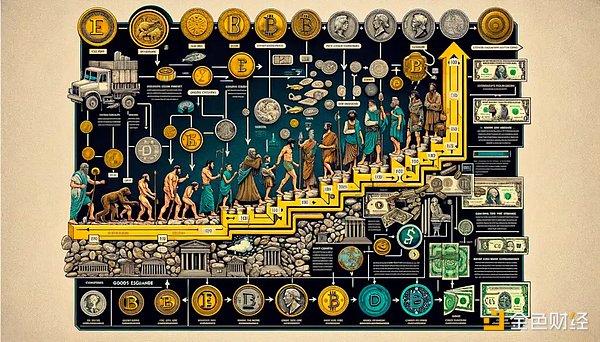
The Evolution of Currency-Dall-E
Trust in the Digital Age: Block Chain and Game Theory
The undeniable fact is that governments have been the primary authority in providing trust for centuries. "Anarchists" who reject this authority and do not recognize the existence of government have always tried to deny this authority and create a different concept of trust. In the digital age, our dwindling privacy and increasing authority have activated a range of activists, leading to the birth of “crypto-anarchy.”
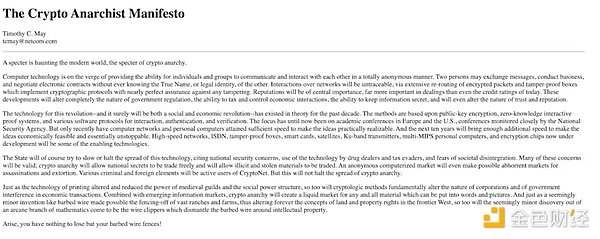
Crypto-anarchist manifesto
Crypto-anarchism believes that people It is now possible to communicate through systems that rely on mathematics and computers without revealing one's identity, potentially revolutionizing the fabric of society as we know it. Crypto-anarchists have proposed certain ideas to ensure that society, rather than central actors, benefits from this changing social structure.
Crypto-anarchists have been working on systems that don’t require human trust for years, but they didn’t succeed until Bitcoin. A brilliant engineer named Satoshi, whose name, identity, location, and even gender are unknown to us, developed the concepts of Bitcoin and blockchain, bringing them to the digital age. Since then, our idea of trust has never been the same.
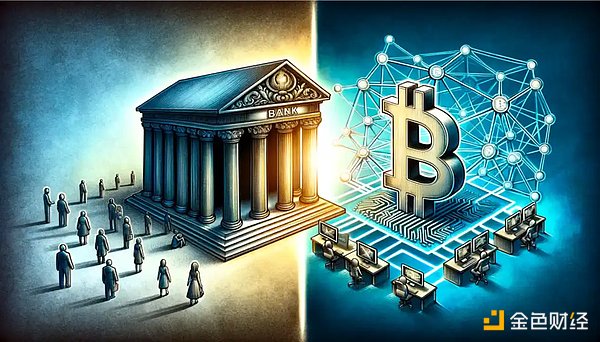
Banks and Bitcoin-Dall-E
Bitcoin creates a Infrastructure, taking trust away from central agencies or groups and giving it to mathematics and game theory. In a nutshell, the infrastructure works like this: Alice wants to send BTC (Bitcoin’s native currency) to Bob. She sends a transaction to the network that includes a BTC commission.
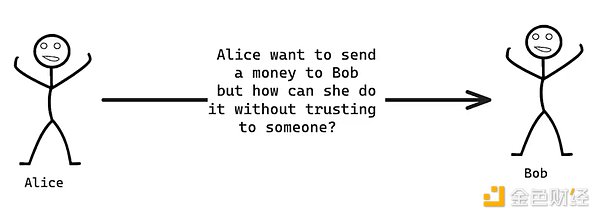
In this network, if miners see this transaction and "act honestly," they will receive a BTC transfer commission and additional BTC rewards. They include the transaction in a block and broadcast it to other participants in the network. If everyone agrees, our miners receive the reward and continue working to find new blocks.
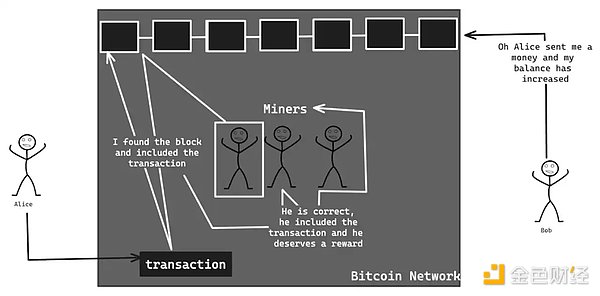
The point here is not how Bitcoin works, but how its trust mechanism works. Miners solve difficult mathematical problems on computers, and the first person to solve the problem finds the block. If a miner includes an invalid transaction or "malicious" behavior in a block, the rest of the network will see this and the dishonest miner will not receive the block reward. Bitcoin’s trust is based on game theory that miners will act honestly to earn this block reward.
Although Bitcoin has opened the way for decentralized trust and payment systems, it has a problem: it can only be used in payment systems, and programmability limited.
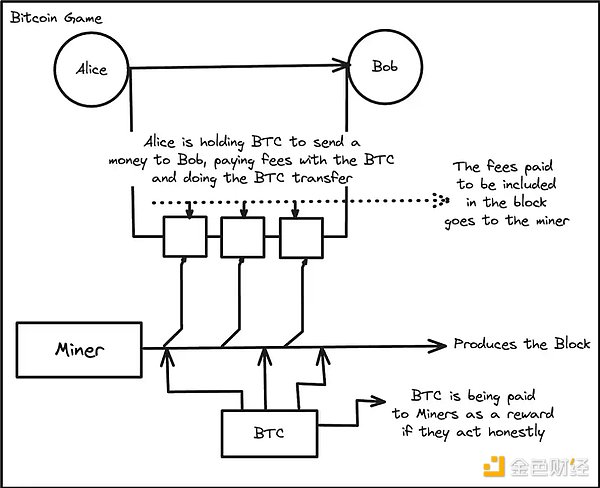
For Ethereum, it's a different game. Participants in the validating network receive a certain amount of Ethereum upfront and are rewarded with Ethereum if they act honestly. Unlike Bitcoin, bad behavior (note: the types of bad behavior are very different, I chose this as the most appropriate translation for malicious behavior in Turkish. I apologize if it caused confusion) will not only result in failure to earn rewards, but Destroy Bitcoin. Ethereum is locked by validators.
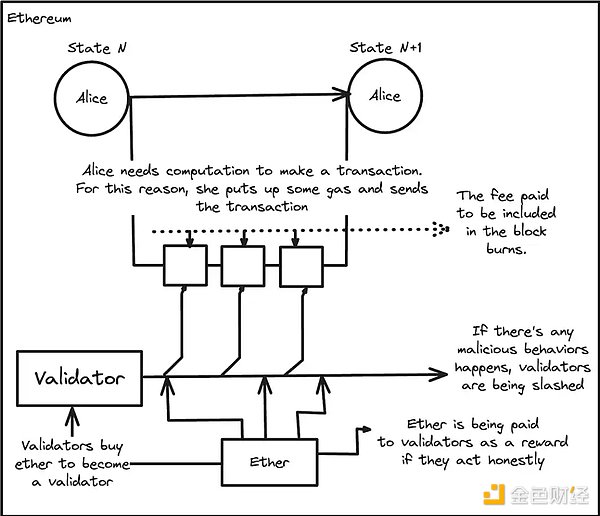
The trust mechanisms of Bitcoin and Ethereum have given rise to a new concept of trust in the digital age: "cryptoeconomic trust."
Programmable cryptoeconomic trust: EigenLayer
PoS (Proof of Stake) like Ethereum ) system basically provides trust as follows: validators stake a certain amount of assets, are rewarded for acting honestly, and are punished by burning locked assets if they are dishonest.
The biggest problem with these systems is that every application that requires cryptoeconomic trust must build its security from the ground up. This can lead to some problems:
· Since each application creates its own economic security, the problem of "economic security fragmentation" arises.
· It is impossible for every application to issue tokens, and poorly designed or useless tokens make the game theory of building a network impossible.
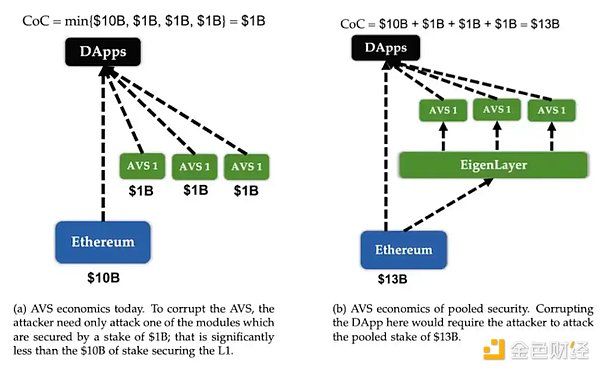
EigenLayer provides an infrastructure that allows for partial renting of Ethereum's cryptoeconomic security by re-staking tokens. (I’ll explain why this is partial in the next section) With this infrastructure in place, developers can build their applications by renting security from Ethereum without issuing new tokens. This can be used to securely store data in any database, decentralize ordering, bridge projects or develop new chains.
What exactly is EigenLayer?
EigenLayer is just a series of smart contracts that exist on Ethereum. These smart contracts support token deposits, withdrawals, and slashing. The point I want to emphasize here is that everything is done completely off-chain by actors called operators.
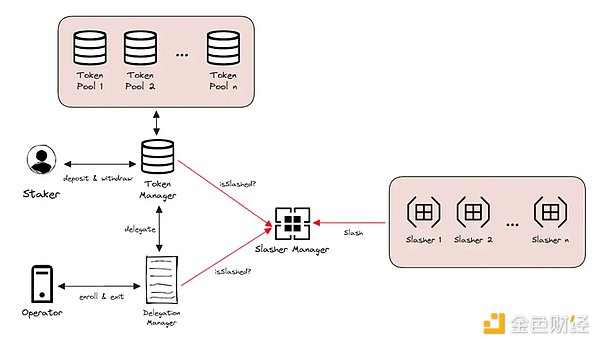
So when you re-stake your tokens in EigenLayer, you trust that your delegate operator will act honestly, as bad behavior by your operator will result in your Ethereum being burned. This is actually a problem with delegation systems in most dPoS (Delegated Proof of Stake) systems, but it introduces additional risks that are not present in the main Ethereum protocol. The same goes for LST.
Blockchain is more than just crypto-economic security, you can’t rent it with money: autonomous communities. In both Ethereum and Bitcoin, what truly provides security is not just cryptoeconomic security, but the dominance of the off-chain community over the on-chain one. Even if a majority of validators or miners act dishonestly, or there is a problem with the chain's software, the community can fork the chain and invalidate previous transactions. What EigenLayer cannot rent from Ethereum and take over is this security provided by the off-chain community.
Vitalik mentioned this in his article "Don't Overload the Ethereum Consensus". He advises that your double-collateralization and re-collateralization applications should not rely on Ethereum for slashing, nor should they add additional complexity to Ethereum's simplified consensus.
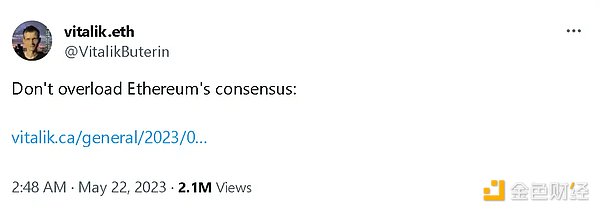
It's important to realize the trade-off in security (not being able to rent to a community outside of the chain) and the security of renting is cryptoeconomic security. In addition, EigenLayer opens a door to innovation for Ethereum. Many applications have already started to be developed on EigenLayer.
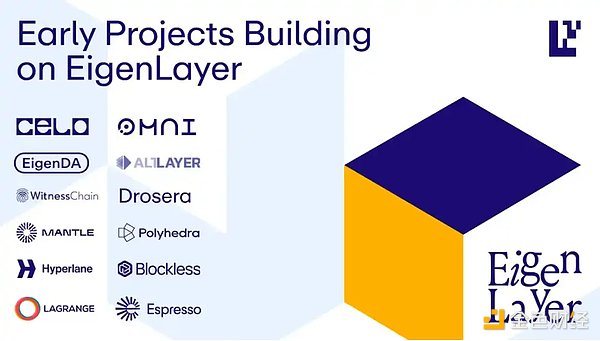
Feature DA
I won't explain Rollups and blockchain from scratch here, but I will discuss the data availability layer, their marketing strategy, Which one is better" and their differences.
Blockchain is more powerful than you think. Even if all participants in the verification chain approve the invalid transaction, your own full node can realize that the transaction is invalid and confirm "without trust" that what is in the chain is correct.

My node vs malicious actors
Although full nodes are very powerful, Setting up a full node from scratch can be very cumbersome and expensive for end users. So we have light clients. However, they believe that the majority of full nodes are honest, so unfortunately there is a trust-based situation.
DAS (Data Availability Sampling) is a method that allows users to confirm that on-chain data is available and valid without downloading all blockchain data. Celestia is currently trying to do this with fraud proofs, while Avail does it with zero-knowledge proofs. They are experimenting with using DAS and powerful light clients to generate larger chunks and increase the data capacity of the chunks.
This is especially evident in the context of Sovereign Rollups on Celestia. Users can participate in the blockchain by running rollup and Celestia's light nodes without trusting anyone. Sounds great, doesn't it? But how many Sovereign Rollups are currently running on Celestia?
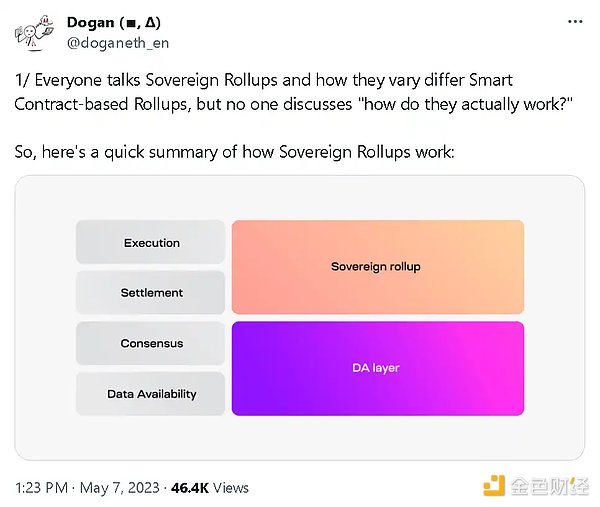
So where is Celestia currently used? The main purpose of Celestia is to provide cheap data availability for aggregation on Ethereum. While this sounds great, there is a big drawback: Ethereum L2 using Celestia cannot directly benefit from Celestia DAS. The main reason is that DAS cannot be verified on Ethereum. Proving Celestia's bridge to Ethereum only checks that 66% of Celestia validators signed the transaction, so any Ethereum rollup cannot benefit from Celestia's innovative technology.
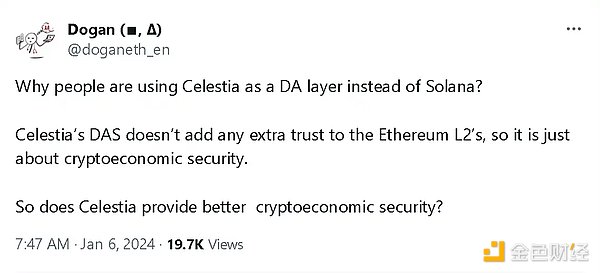
The same issue applies to Avail, but I know they have plans for this issue, which I won't discuss here because they haven't shared them publicly yet.
EigenDA: EigenDA is an application that leverages EigenLayer and provides data availability (DA) services to Ethereum aggregates. Yes, I call EigenDA an application because it is not a blockchain but an efficient database. The database provides services by providing data availability oracles to aggregate and all applications requiring Ethereum data availability. Since it's not a blockchain, concepts like light clients don't apply to EigenDA. I won't get into the technical details, but it offers greater efficiency and cost-effectiveness compared to the competition. As mentioned before, EigenLayer only provides cryptographic economic security for applications. In this regard, EigenDA appears to be on par with Celestia and Avail in terms of cryptoeconomic security; however, EigenDA may offer greater security through restaking, but there is an important nuance to consider:
Users running Sovereign Rollups and light clients on Celestia can punish Celestia validators for (potential) misbehavior, whereas in EigenDA this punishment is entirely up to the operator. Therefore, it's easier to punish misbehavior in Celestia, whereas I don't see this improvement in EigenDA.
Reference reading: "ACeD: Extensible Data Availability Oracle"
These three projects Each has significant advantages, and I'm working hard to understand and further develop the innovations they bring.
A new concept of trust introduced in the world of crypto-anarchy: EigenLayer. I believe EigenLayer’s importance in advancing trust in the crypto-economy will become increasingly evident in the future.
 JinseFinance
JinseFinance
 JinseFinance
JinseFinance JinseFinance
JinseFinance JinseFinance
JinseFinance JinseFinance
JinseFinance JinseFinance
JinseFinance JinseFinance
JinseFinance JinseFinance
JinseFinance JinseFinance
JinseFinance JinseFinance
JinseFinance JinseFinance
JinseFinance